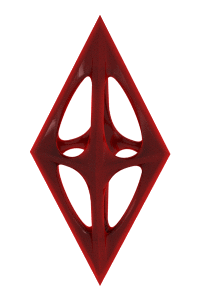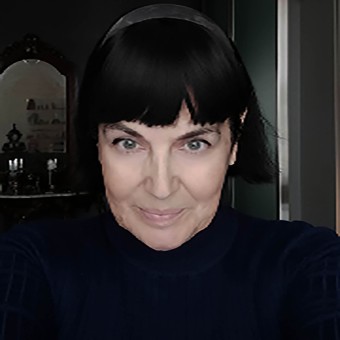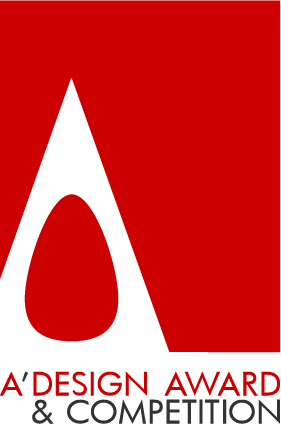
| THE AWARD |
| CATEGORIES |
| REGISTRATION |
| SUBMIT YOUR WORK |
| ENTRY INSTRUCTIONS |
| TERMS & CONDITIONS |
| PUBLICATIONS |
| DATES & FEES |
| METHODOLOGY |
| CONTACT |
| WINNERS |
| PRESS ROOM |
| GET INVOLVED |
| DESIGN PRIZE |
| DESIGN STORE |
| THE AWARD | JURY | CATEGORIES | REGISTRATION | PRESS | WINNERS | PUBLICATIONS | ENTRY INSTRUCTIONS |
Interview with Anna rita Emili |
Home > Designer Interviews > Anna rita Emili |
Editor Frank Scott (FS) from DesignPRWire has interviewed designer Anna rita Emili (ARE) for A’ Design Award and Competition. You can access the full profile of Anna rita Emili by clicking here.

FS: Could you please tell us more about your art and design background? What made you become an artist/designer? Have you always wanted to be a designer?
ARE: First of all, I can say that I have always been an enthusiast of architecture and design. I have had the opportunity to have as two important and enthusiastic Italian architects who taught me to know architecture also and especially from a theoretical point of view . I speak of Alessandro Anselmi and Cristiano Toraldo from France, exponent of the superstudio. Both wise innovators . Finally I got to know indirectly another fundamental figure of the architectural panorama for which I also wrote a book entitled Rochard Buckminster Fuller and the Neoavanguardie. Fuller...great character, projected into the future but with awareness. Of him I appreciated the nomadic architecture, the respect for nature and men his studies on biology and science and how these aspects have then extended to the Hippy culture of the sixties seventies.
FS: Can you tell us more about your company / design studio?
ARE: altro_studio was founded in 1998 by a group of people prepared to work in an interdisciplinary environment. From the very start, altro_studio began to research "movement" as applied to the home, ranging from temporary housing to major urban projects. We work on the new concepts of flexible, transformable, eco living space, in order to understand the new, functional and structural needs of the individual. For this and other reasons, altro_studio focused its research on new technologies (mainly linked to automated systems) and innovative materials, and investigated the problems of environmental sustainability. Our aspirations Whereas architecture is considered a perfect synthesis between art and science, we aspire on the one hand to facts and phenomena close to the real world surrounding us (expressed by new techniques and materials) and, on the other, to interdisciplinary studies involving music, philosophy, literature and, above all, the figurative arts. Art has always expressed political, cultural and social thought and has always been considered as avant-garde compared to architecture. Figurative art has always been an essential part of architecture. This is the tool, which distinguishes a true architect from a simple technician of architecture. This has been proved by the research of Le Corbusier, Mies van der Rohe, Frank Gerhy and Zaha Hadid, in which the artistic aspect becomes the matrix for their architectural works. Our ambitions come from closely observing the world around us and projecting it into the future. Our objective is to offer concrete answers to the numerous problems, which affect the real world in which we live. We are speaking of phenomena, which involve the entire planet, such as immigration, mobility and complexity, or of natural phenomena due to climate change, such as desertification, hurricanes and the rise in water levels, or even events, such as virtual communication via the creation of networks, computerisation and the computer. Lastly, we aim to concentrate our observations on the transformations produced by social change in recent decades, and on new ways of living public and private, collective and individual space.
FS: What is "design" for you?
ARE: I think that architecture is considered a perfect synthesis between art and science, I aspire on the one hand to facts and phenomena close to the real world surrounding us (expressed by new techniques and materials) and, on the other, to interdisciplinary studies involving music, philosophy, literature and, above all, the figurative arts. Art has always expressed political, cultural and social thought and has always been considered as avant-garde compared to architecture. Figurative art has always been an essential part of architecture. This is the tool, which distinguishes a true architect from a simple technician of architecture. My ambitions come from closely observing the world around us and projecting it into the future. Our objective is to offer concrete answers to the numerous problems, which affect the real world in which we live. We are speaking of phenomena, which involve the entire planet, such as immigration, mobility and complexity, or of natural phenomena due to climate change, such as desertification, hurricanes and the rise in water levels, or even events, such as virtual communication via the creation of networks, computerisation and the computer. Lastly, we aim to concentrate our observations on the transformations produced by social change in recent decades, and on new ways of living public and private, collective and individual space. I think they are the way you can produce a conscious and meaningful architectural design
FS: What kinds of works do you like designing most?
ARE: My work focuses on the home and living in all its aspects and I like to work on this important typology that has developed over the centuries of real architectural jewels . Having said that I would like to design a Mediterranean house among the olive trees with a special SPA space
FS: What is your most favorite design, could you please tell more about it?
ARE: There is no design that I like. I love everything from living space to the detail design
FS: What was the first thing you designed for a company?
ARE: A cardboard house that later became Absolute Box. A very small house of about 15sqm designed to the detail and furniture specially designed for its small measures
FS: What is your favorite material / platform / technology?
ARE: Technology focused on the nomadic home, light, flexible and convertible
FS: When do you feel the most creative?
ARE: The idea of the project is coming out and it gets better as I go but it focuses more when I am in the car or during the trip
FS: Which aspects of a design do you focus more during designing?
ARE: the aspect of innovation, originality and high functionality. It is important to me to work on spatial perception and how it can affect the psyche of the individual. The aim is also to achieve comfort in living
FS: What kind of emotions do you feel when you design?
ARE: Many emotions because I am already inside the space at the moment when I design it
FS: What kind of emotions do you feel when your designs are realized?
ARE: emotions related to space, colors, light, materials, movements that the project can perform and the noise it may emit
FS: What makes a design successful?
ARE: originality and feasibility
FS: When judging a design as good or bad, which aspects do you consider first?
ARE: if is original and feasible
FS: From your point of view, what are the responsibilities of a designer for society and environment?
ARE: we have very important responsabilities for society and enviroment, expecially in this particular time.
FS: When was your last exhibition and where was it? And when do you want to hold your next exhibition?
ARE: Paris, Palais de Tokyo, next Biennal of Venice
FS: How would you describe your design style? What made you explore more this style and what are the main characteristics of your style? What's your approach to design?
ARE: Being firmly convinced that architecture is a perfect synthesis of science and art, my inspirations are, on one hand, as I said before, the facts determining the reality around us (this finds expression in the use of new techniques and materials), and, on the other hand, the study of the various arts: music, philosophy, literature, but above all the figurative arts. Art has always been the utmost expression of political, cultural and social thought and is typically expressed and developed long before architecture. The knowledge of art as well as an artist’s mindset are essential components of the spirit of an architect. It is this “artist’s mindset” that distinguishes a real architect from a mere technician of architecture. Our ambitions are to look constantly ahead, at the world around us and project it into the future. Our goal is to offer real answers to the kind of problems that increasingly affect the reality we live in. What we are talking about are events affecting the entire planet such immigration, mobility, complexity, etc., or natural phenomena such as desertification, hurricanes, floods, etc., or even computerization, an increasingly fast communication, etc. … Our purpose is to discern, based on social, anthropological, political experience, what will be the developments of future society without omitting near-future scenarios that might be not so optimistic. In that case, our message becomes a warning that cannot be ignored
FS: Where do you live? Do you feel the cultural heritage of your country affects your designs? What are the pros and cons during designing as a result of living in your country?
ARE: I live in Rome but in Italy is big ancient country this for an architect that think to future is very difficult
FS: How do you work with companies?
ARE: continuous confrontation
FS: What are your suggestions to companies for working with a designer? How can companies select a good designer?
ARE: they have to consider origiality and at the same time techonogical capability
FS: Can you talk a little about your design process?
ARE: I think for new idea and after first thought I alweis search for perfect detail resolution. When idea becomes detail project it means that is a good project
FS: What are 5 of your favorite design items at home?
ARE: small objects
FS: Can you describe a day in your life?
ARE: In the morning we carry out all the bureaucratic operations related to the project , or we go on site. In the afternoon, we design and make models or three-dimensional checks of the project. My studio is first of all a creative workshop then a technical studio
FS: Could you please share some pearls of wisdom for young designers? What are your suggestions to young, up and coming designers?
ARE: to know the past, to look forward and project oneself into the future. In this context, curiosity cannot be lacking for everything that surrounds us and in the broadest sense of the term
FS: From your perspective, what would you say are some positives and negatives of being a designer?
ARE: The positive aspects are creativity and the possibility of engaging others. the negative ones are related to the extreme effort that develops in the realization of a project . We have too many unnecessary constraints in Italy
FS: What is your "golden rule" in design?
ARE: Imagine a different future and work towards good sustainability
FS: What skills are most important for a designer?
ARE: All skills. I have an old vision of the profession. that of the architect’s profession seen as entities able to play all roles, from urban planning to architectural detail to furniture to the design object
FS: Which tools do you use during design? What is inside your toolbox? Such as software, application, hardware, books, sources of inspiration etc.?
ARE: I can say that I work a lot with the first three-dimensional verification and for this reason I need the model. For me it is the only tool that allows you to know in depth the construction and the architectural volume
FS: Designing can sometimes be a really time consuming task, how do you manage your time?
ARE: As I said the project is formed gradually. For this reason, the time required for its implementation is fragmented and this also with tight delivery deadlines
FS: How long does it take to design an object from beginning to end?
ARE: if we also consider the implementation I would say minimum six months
FS: What is the most frequently asked question to you, as a designer?
ARE: I am often asked if what I have planned can be realized. I answer that there are no limits to the new technology
FS: What was your most important job experience?
ARE: the design of 6000 square metres in Rome
FS: Who are some of your clients?
ARE: I would say large private or small industrial
FS: What type of design work do you enjoy the most and why?
ARE: All about the type of residence
FS: What are your future plans? What is next for you?
ARE: I do not know what the future holds but surely I will continue to work on the same theme of the "movement "applied to the type of residence
FS: Do you work as a team, or do you develop your designs yourself?
ARE: I think that I design by myself and after a work with a team
FS: Do you have any works-in-progress being designed that you would like to talk about?
ARE: I have several but to talk about it would be too long we feel their realization. They will speak themselves
FS: How can people contact you?
ARE: Through knowledge and many times also on-line requests
FS: Any other things you would like to cover that have not been covered in these questions?
ARE: They seemed perfect questions to which nothing is added
FS: Thank you for providing us with this opportunity to interview you.
A’ Design Award and Competitions grants rights to press members and bloggers to use parts of this interview. This interview is provided as it is; DesignPRWire and A' Design Award and Competitions cannot be held responsible for the answers given by participating designers.
Press Members: Register and login to request a custom interview with Anna rita Emili.
| SOCIAL |
| + Add to Likes / Favorites | Send to My Email | Comment | Testimonials |

